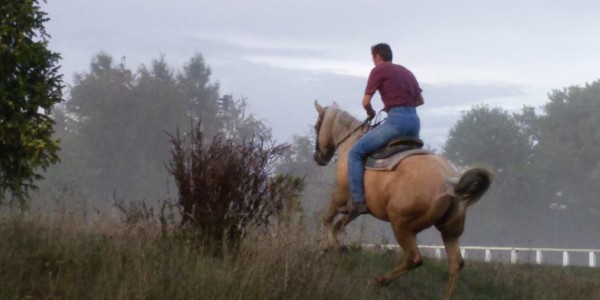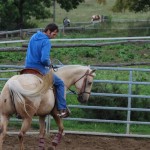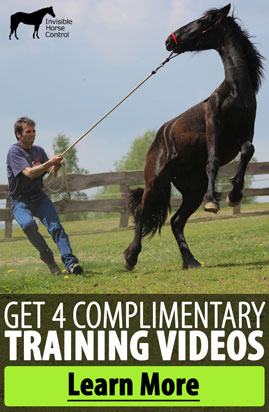A lot of people are concerned about using the correct amount of pressure. They are worried about not using enough pressure or whether using a whip or spurs is going to be too harsh.
The amount of pressure that you should use in any given situation depends on the sensitivity of your horse and his level in the training process.
No guessing whether you are too harsh or not using enough pressure
But despite that you can always tell whether you used too much pressure or too little.
You can tell absolutely reliably by just watching your horses reactions.
- If you use the correct amount of pressure, you horse will just willingly do what you were asking. Of course only if he is capable of it and knows the exercise already.
- If your horse reacts slowly, unwillingly or doesn’t react at all, then you know you didn’t use enough pressure. In this case you should ask again, but this time using significantly more pressure. If your horses reaction is rushed and exaggerated then you know you used too much pressure.
Horse that reacts willingly on low pressure has many hidden benefits
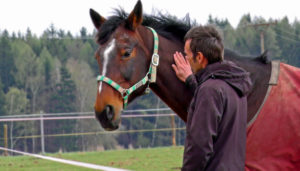
It is always better when your horse reacts on low pressure, other then if you have to use a lot of pressure to get your horse to do anything.
It is much less tiring to ride on a horse that just reacts on low pressure, but mainly it is much easier to correct a horse that reacts on low pressure.
When your horse gets stuck and doesn’t want to do something, you can correct him easily if he is used to reacting on low pressure. If you have to use a lot of pressure in general, for example just to get your horse to back up, to stop or to do anything, it becomes very difficult to correct him once he doesn’t feel like doing something. You might not even be able to correct him at all in some cases.
These 3 steps will teach your horse to react on lower pressure
The principle of getting your horse to react on the lowest pressure possible is quite easy, and it works in the same way, riding in the saddle, and working with your horse from the ground.
If you want your horse to react on low pressure, just do following:
- Ask him using very low pressure first. Use less pressure than what your horse is used to at the moment.
- If he doesn’t react, ask again within two seconds, but this time using more pressure than he is used to. What you want now is a slightly exxagerated reaction. You want your horse to do what you were asking a bit more eagerly than you would normally expect. If you do not get a slightly exxagerated reaction, your horse will not realize that something should have already happened when you asked the first time.
- If it still didnt work, you will now have to use significantly more pressure. Now you don’t just want your horse to do what you were asking in a slightly more willing manner than usual, you want an exaggerated reaction.
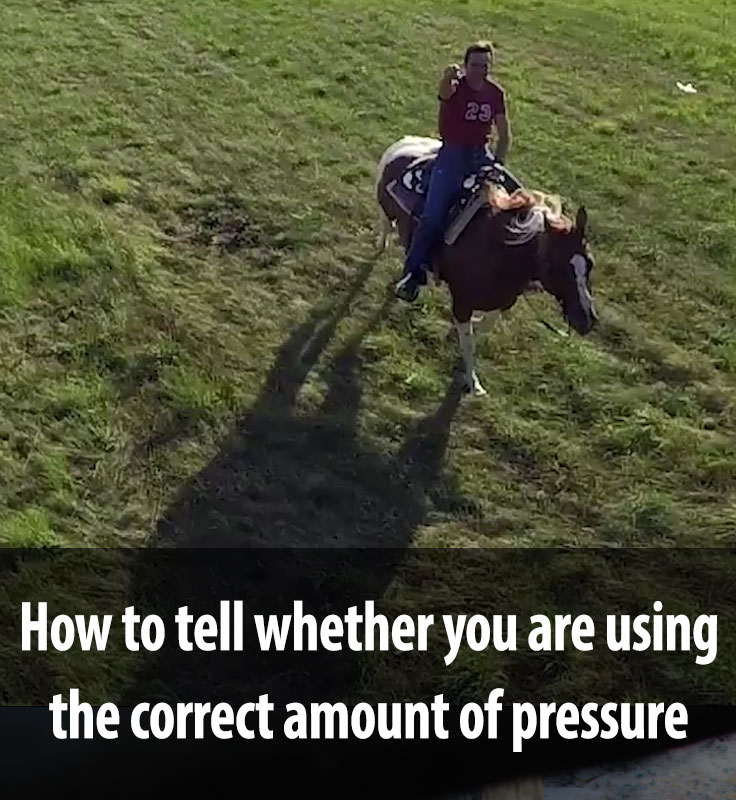
Pin this article on your Pinterest!
For example, if I ask my horse for trot and he doesn’t react, I ask again using both of my shins, but this time I make sure that I use significantly more pressure. If I want to stop for example, I pull my reins slowly and gradually, and gradually increase the pressure until my horse stops. As soon as my horse stops I release the pressure.
That way I basically tell my horse, the faster you stop the less pressure you will have to deal with. Or in the first example you tell your horse “If you listen the first time I ask for trot, you wont have to deal with me asking you again using a lot of pressure.”
You can teach basically almost every horse to react on low pressure nicely. It is just important to realize that making sure your horse reacts on low pressure is not something to practice just in the begging of the whole training process, its something to work on continuously.
You will have to use more pressure than normal to get to use less pressure than normal

And of course its important to realize that in order to teach your horse to react on low pressure, you will have to use a lot of pressure sometimes.
And the last and probably the most important thing is to always be fair. Always ask using low pressure first. Only when your horse doesn’t react on low pressure, you can use high pressure to tell him that he did something wrong, and that it is going to be much better for him to just react on low pressure.
